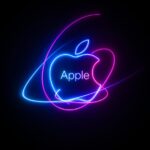Apple (NASDAQ:AAPL)’s Vision Pro mixed reality headset has encountered a significant production decrease, raising questions about its future. The headset, known for its potential in spatial computing and workplace applications, is now seeing a decline in demand, coupled with production halts at key assembly points. With a high price tag compared to competitors, Apple’s strategy for the Vision Pro is under scrutiny, especially as the company simultaneously focuses on integrating advanced AI into its product ecosystem.
Reports have surfaced indicating Apple is reducing the production of the Vision Pro headset, with sources from Luxshare, a key assembler, revealing communication from Apple about potential manufacturing wind-downs. This reduction follows a production suspension at a factory in May, illustrating Apple’s shift in focus. The Vision Pro’s early launch phase saw interest but was quickly met with declining sales, leading to these strategic adjustments.
Why is Apple Cutting Production?
Production cutbacks stem from a mixture of cost considerations and market response. The Vision Pro’s steep starting price of $3,500 positions it above competitors like Meta (NASDAQ:META)’s Quest 3, priced at $500, which has affected market penetration. Additionally, Apple’s initial sales projections of 700,000 to 800,000 units for 2024 have been revised downward. Economic factors and a competitive tech landscape are influencing these decisions.
Is There a Shift in Apple’s Strategy?
Apple appears to be adjusting its strategy, potentially developing a more affordable version of the Vision Pro to appeal to a broader audience. This potential pivot towards a cost-effective model may help Apple regain consumer interest. Furthermore, the integration of AI technology, as hinted by online reports, suggests future iterations of the Vision Pro could offer enhanced features.
Apple’s difficulties with the Vision Pro aren’t isolated. The company’s flagship product, the iPhone, has also experienced sales stagnation in the U.S. since 2020, affecting Apple’s overall device sales reporting. These trends reflect ongoing challenges in maintaining growth within saturated markets. Apple’s focus on diversifying its product offerings and incorporating advanced technologies like artificial intelligence marks a directional shift in addressing these challenges.
Assessing these developments reveals that while technological innovation remains central, market dynamics and consumer behavior are crucial for Apple’s strategic planning. The Vision Pro serves as a testament to the balance between innovation and market receptivity. Companies like Apple must continuously adapt, leveraging market feedback and technological advancements.
The Vision Pro’s journey highlights the complexities faced by tech giants in maintaining market leadership. Apple’s adjustment strategies indicate a responsive approach to fluctuating market demands and an emphasis on staying competitive through innovation. As Apple navigates these challenges, the interplay between product development and consumer engagement becomes critical.










